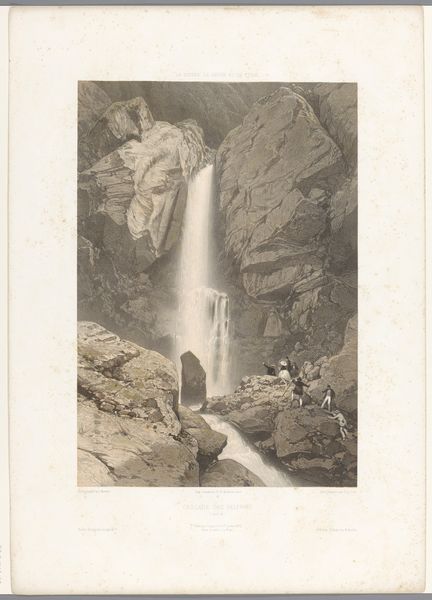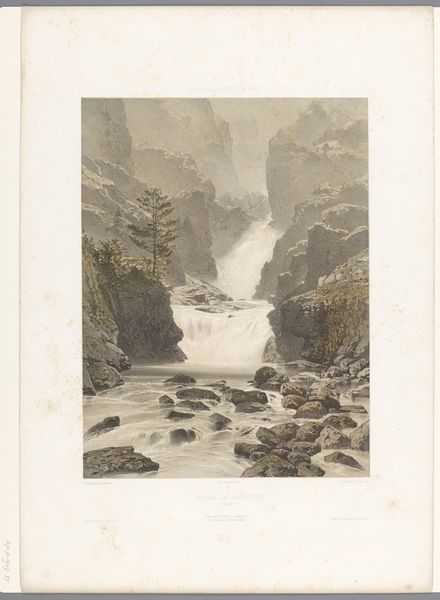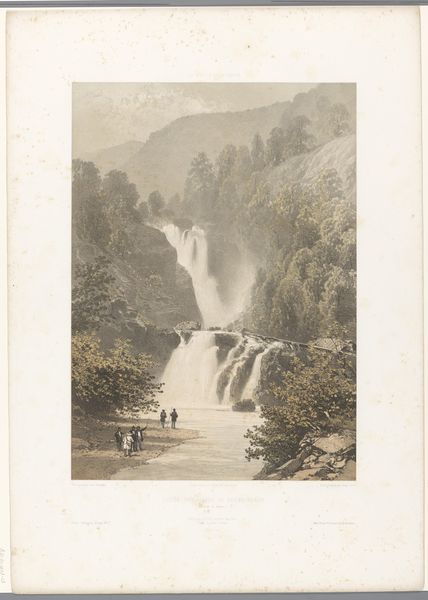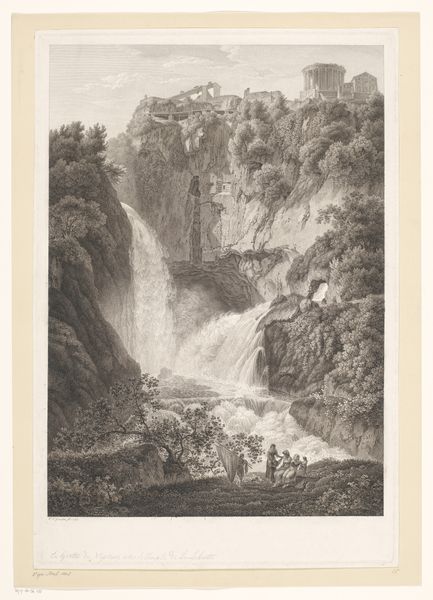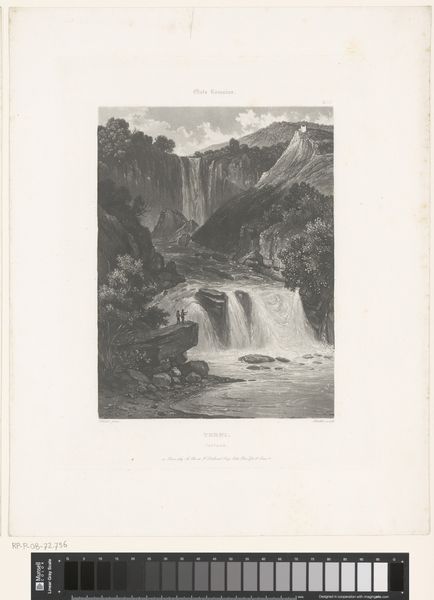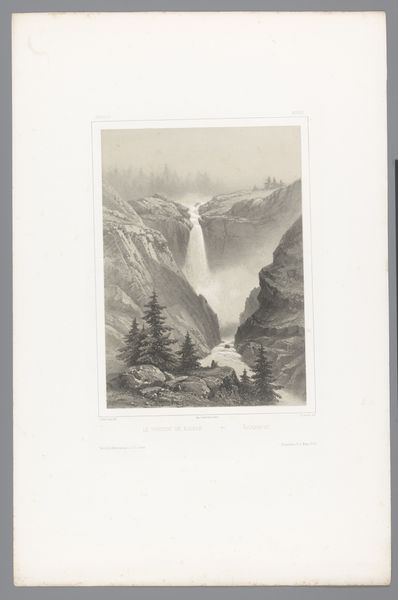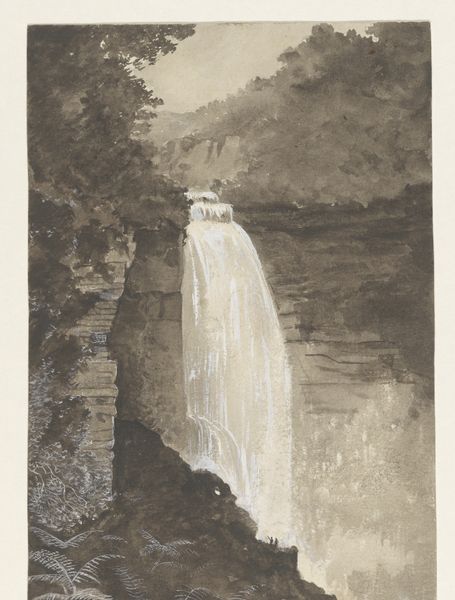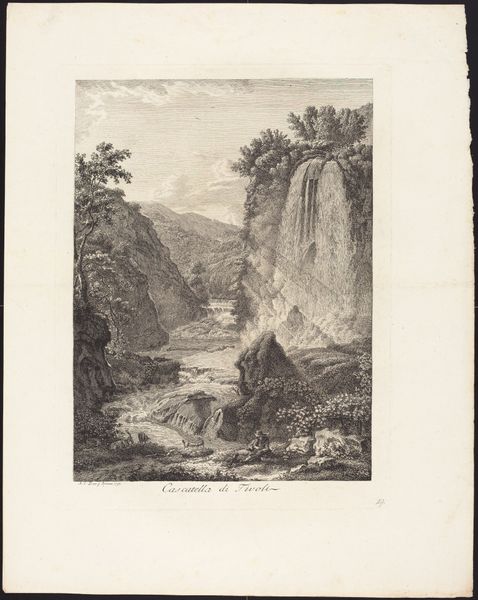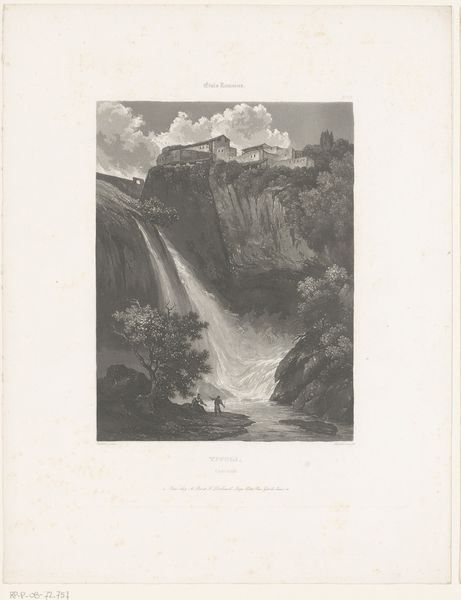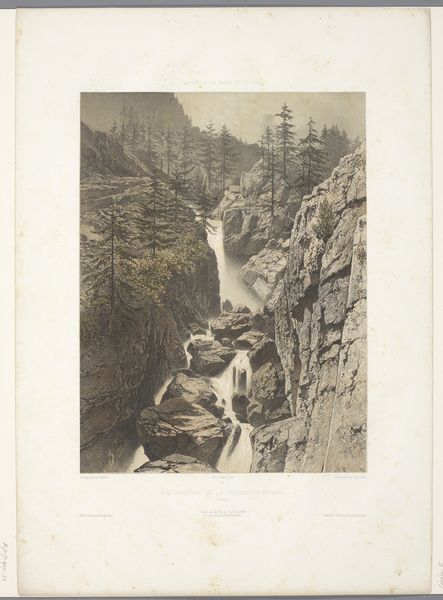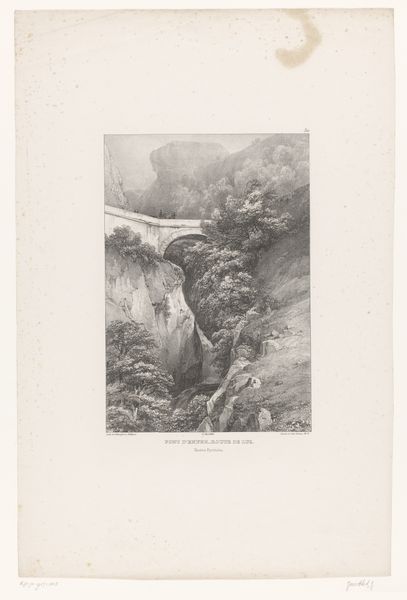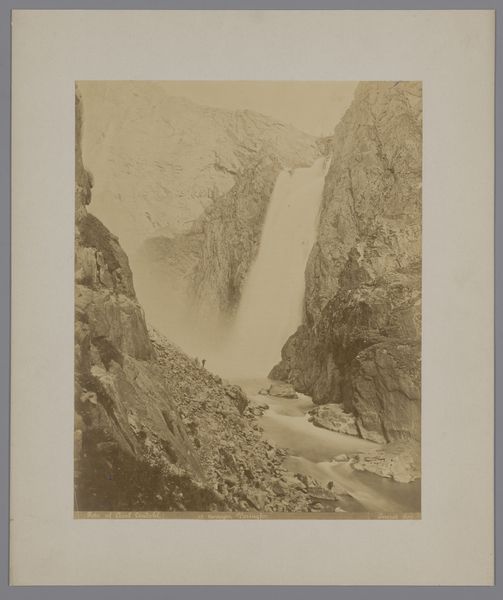
Dimensions: height 565 mm, width 400 mm
Copyright: Rijks Museum: Open Domain
Editor: Here we have Eugène Cicéri’s “View of the Dard Waterfall,” created in 1859. It's a beautiful watercolor piece, very evocative. I find myself drawn to the interplay of light on the rocks, yet I wonder about its message. How do you interpret this work? Curator: Waterfalls in Romanticism often symbolize the sublime power of nature, and a confrontation with the immense. Consider, too, the presence of the tiny figures at the base. What feelings arise when you juxtapose those human forms with such overwhelming natural force? Editor: A sense of awe, definitely, but also of vulnerability. Almost like we're meant to feel insignificant in the face of something so grand. Is that a common theme? Curator: Precisely! And note how the waterfall isn't just water. It's almost light itself, bisecting the rugged darkness. In this context, the water represents purity, a powerful force carving its way through the immovable, hinting at time, change, and persistence. The Dard waterfall isn’t only a location but also embodies transformation. Does that influence your perception? Editor: Yes, that really clarifies the dynamism of the piece. It’s not just a static view; it is an active force changing the very landscape it inhabits. Curator: Also, observe how the cool tones juxtapose against warmer grays, creating a palpable sense of depth. Consider how the image might reflect the values of the time: The interest in geology, exploration, and maybe a yearning for the untouched wild places that industrialization threatened. Does viewing the painting through that lens shift your perspective? Editor: Absolutely, I hadn’t considered the industrial context. Seeing it now, the painting almost becomes a kind of environmental statement, even if subtle. I appreciate how it reveals a broader cultural memory through its imagery. Curator: Indeed, symbols gain their meanings across time, continuously shifting. The image captures not only the fall of water but the flow of cultural ideas. Editor: I hadn’t thought about it that way. It's given me a completely different understanding. Curator: And that’s the beauty of exploring art through its symbolism!
Comments
No comments
Be the first to comment and join the conversation on the ultimate creative platform.
